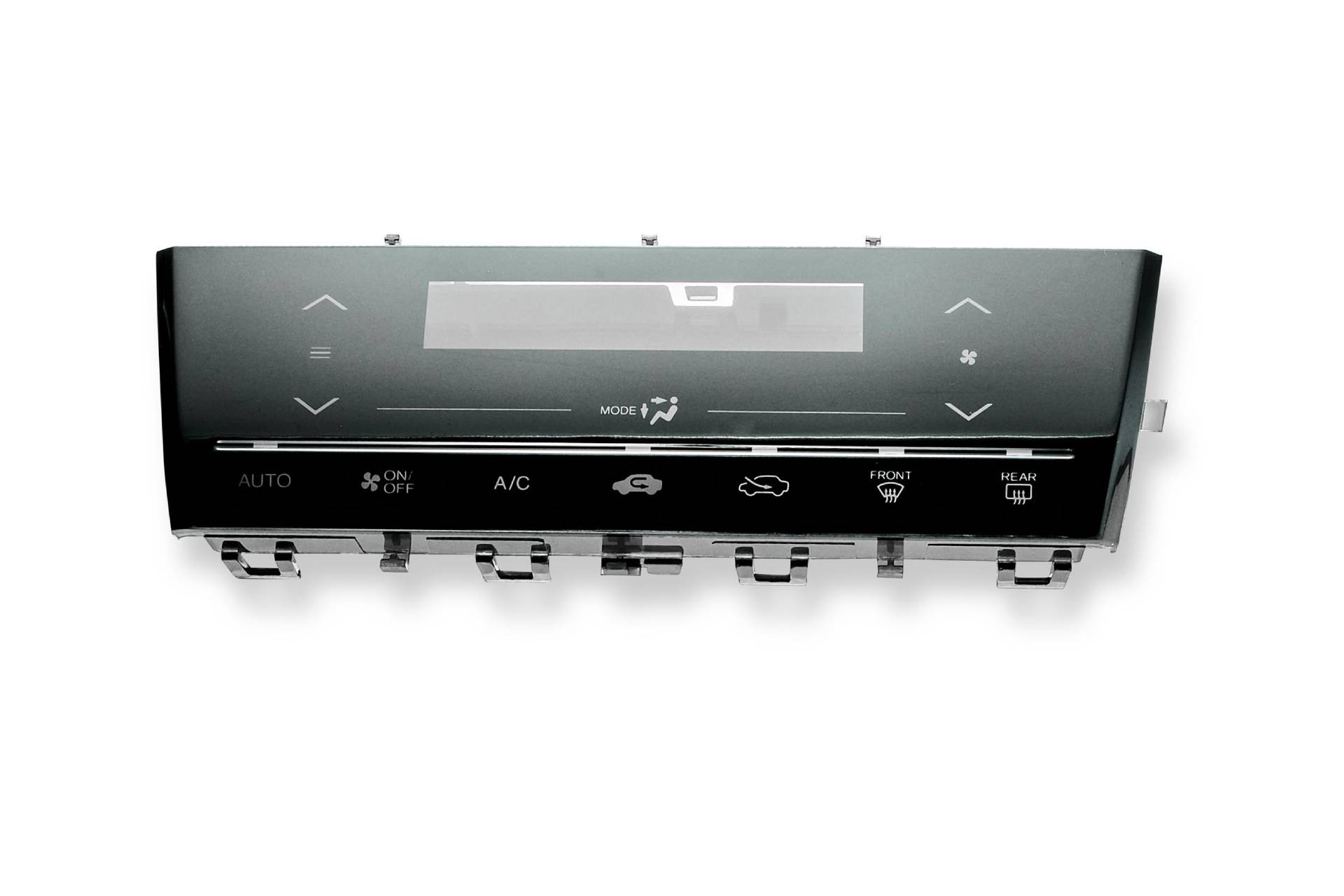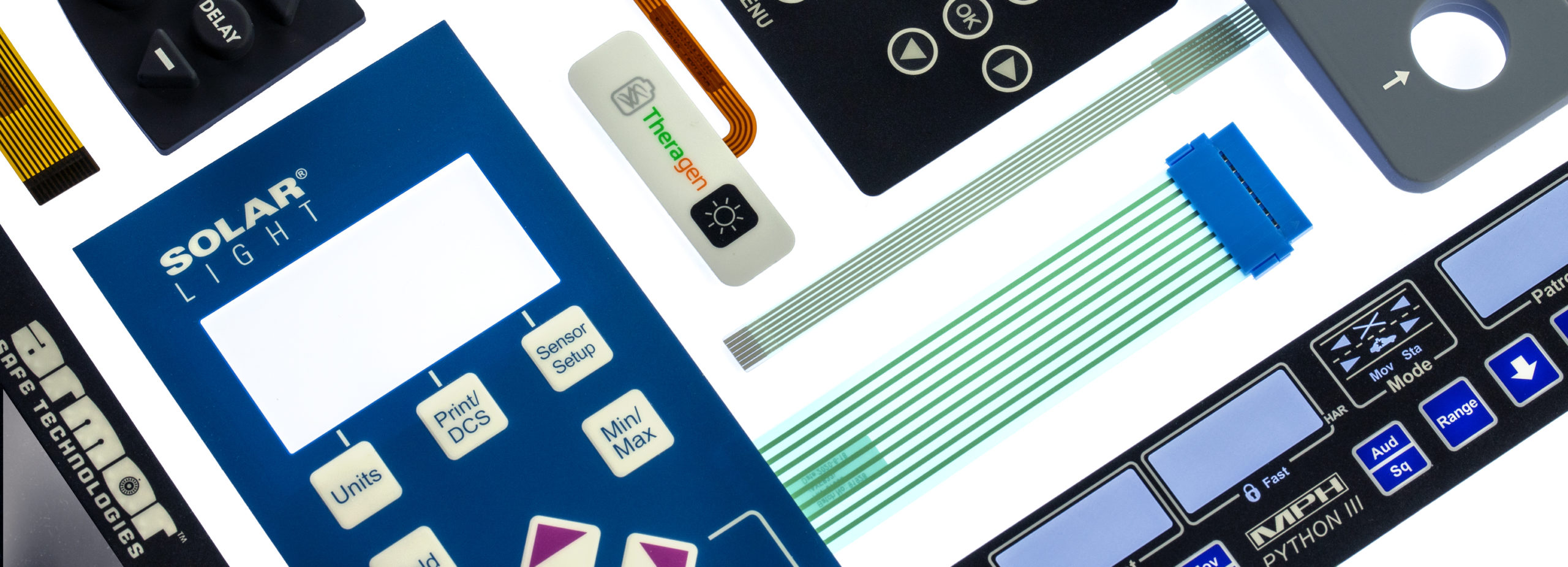If longevity matters, sourcing from a seasoned membrane switch manufacturer is crucial.
If longevity matters, sourcing from a seasoned membrane switch manufacturer is crucial.
Blog Article
Everything About Membrane Switch: Comprehending Its Layout and Functionality
When you think of the control user interfaces in modern-day tools, membrane layer switches usually enter your mind. These components are greater than just buttons; they blend design and performance effortlessly. Understanding just how they work and what makes them efficient can change your perspective on everyday electronic devices. Yet, there are subtleties to their layout and efficiency that you might not know. Allow's explore what sets membrane changes besides other control systems.
What Are Membrane Buttons?

Their seamless nature makes them easy to clean and resistant to dirt and wetness, a crucial function in lots of atmospheres. Membrane layer buttons can additionally be personalized relating to shape, dimension, and graphics, enabling makers to develop one-of-a-kind interfaces tailored to particular items. And also, they're lightweight and slim, which helps in minimizing the general mass of gadgets. On the whole, membrane buttons play a substantial function in enhancing user experience across a vast range of applications.
Just How Membrane Switches Over Job
When you press a trick on a membrane layer switch, it triggers an uncomplicated yet effective device. The top layer, usually made from flexible material, lowers onto a conductive layer under it. This action bridges the space between conductive traces, completing an electrical circuit. As quickly as the circuit closes, it sends out a signal to the device's controller, which analyzes your input.
You'll see that the tactile responses differs based on the switch layout, providing either a soft click or a much more noticable action. As soon as you release the key, the membrane layer go back to its initial position, reopening the circuit and stopping the signal. This procedure takes place almost immediately, making certain a responsive customer experience.
Membrane switches are popular because of their resilience and resistance to dust and dampness, making them excellent for various applications, from household devices to medical tools. Recognizing this operation assists you appreciate their extensive usage.
Secret Elements of Membrane Layer Buttons
Comprehending the crucial elements of membrane layer switches is essential for understanding their capability and style. The safety layer shields versus ecological factors and put on, prolonging the button's lifespan. By recognizing these elements, you'll acquire understanding into exactly how membrane layer changes operate and their value in various applications.
Products Made Use Of in Membrane Switch Style
The efficiency and sturdiness of membrane layer switches heavily rely on the materials used in their design. You generally run into polyester and polycarbonate as key substratums because of their excellent toughness and adaptability. These products resist scrapes and chemicals, making them ideal for requiring atmospheres.
The conductive layers often make use of silver or carbon, picked for their dependability and conductivity. membrane switch manufacturer. Silver provides superior efficiency, while carbon is an economical choice. For the overlay, you might consider a matte or glossy finish, depending on your visual demands and individual experience
Make specific to choose adhesives that hold up against environmental elements like temperature level and moisture. Selecting the right materials will certainly ensure your membrane layer switch stands the test of time.
Layout Considerations for Membrane Buttons
While developing membrane layer switches, it's crucial to take into account numerous variables that influence their capability and customer experience. Beginning by focusing on the format and button dimension; make certain they're intuitive and very easy to navigate.
Verify your style accommodates ecological elements, like wetness or temperature level variations, which could affect efficiency. By very carefully taking into consideration these components, you'll produce a membrane switch that boosts use and satisfaction.
Applications of Membrane Buttons
Membrane layer switches are functional components located in various applications, from commercial devices to customer electronics. You'll see their impact in devices that require resilient user interfaces and in devices that benefit from smooth styles. Comprehending these applications helps you appreciate the capability and functionality of membrane layer buttons in day-to-day modern technology.
Industrial Devices Use
When you're looking to boost the functionality of industrial equipment, membrane buttons offer a dependable option that combines longevity with easy to use design. These buttons are best for extreme settings, providing resistance to dust, dampness, Homepage and chemicals. You'll find them in control panels for producing makers, HVAC systems, and clinical devices, where precision and responsiveness are essential. Their low profile means they fit effortlessly right into different tools, saving useful area while preserving simplicity of usage. With personalized graphics and backlighting alternatives, you can produce an instinctive interface for operators, enhancing effectiveness and safety and security. And also, their lengthy life-span reduces upkeep prices, making them a wise financial investment for your industrial applications. Embrace membrane buttons to simplify your procedures and enhance total performance.
Consumer Electronic Devices Assimilation
In the domain of customer electronics, membrane buttons play an important duty in improving customer communication and tool performance. You'll locate them in devices like microwaves, remote controls, and video gaming consoles, supplying a smooth method to communicate with modern technology. Their streamlined layout permits very easy assimilation into various items, making controls instinctive and straightforward. With their ability to incorporate graphics and backlighting, you can appreciate a review modern aesthetic that enhances the tool's overall appearance. Membrane layer buttons likewise assure toughness and resistance to dust and dampness, prolonging the life expectancy of your electronics. By picking membrane layer switches, you enhance not just the functionality yet additionally the design of your devices, making day-to-day interactions smooth and pleasurable.
Benefits and Drawbacks of Membrane Switches
While membrane buttons supply an array of advantages, they likewise come with some drawbacks that you should take into consideration. One significant benefit is their portable style, making them suitable for space-constrained applications.

Nonetheless, there are drawbacks. Membrane layer switches can have a shorter life-span compared to mechanical switches, particularly under hefty use. They can likewise be less responsive, which could affect individual comments throughout procedure. If damaged, fixing them can be difficult and usually calls for complete substitute. Ultimately, their sensitivity to severe temperature levels and ecological problems might restrict their effectiveness in certain settings. Stabilizing these benefits and drawbacks will aid you establish if membrane layer buttons are the right fit for your job.
Frequently Asked Inquiries
Exactly How Lengthy Do Membrane Layer Switches Commonly Last?
Membrane layer switches over generally last between 5 to 10 years, depending on usage and ecological conditions. You'll intend to review variables like wear, direct exposure find this to dampness, and temperature level changes to determine their long life efficiently.
Can Membrane Layer Changes Be Custom-made for Particular Designs?
Yes, you can personalize membrane switches to fit certain designs (membrane switch manufacturer). You'll have the flexibility to choose colors, shapes, and designs that match your job's needs, ensuring they mix seamlessly with your total aesthetic
What Is the Expense Range for Membrane Change Production?
The expense range for membrane layer switch production generally falls between $1 and $10 each, relying on aspects like style complexity, quantity, and materials. You can obtain quotes from makers to discover the most effective option.

Are Membrane Layer Changes Water Resistant or Immune?
Membrane layer switches can be made to be water-proof or immune, depending upon products made use of and building and construction techniques. If you require them for damp settings, ensure you define those demands throughout the layout process.
How Do Membrane Layer Switches Compare to Standard Buttons?
Membrane buttons are typically thinner and more flexible than conventional switches, providing a streamlined style. They're often less complicated to clean and integrate, yet may not supply the tactile feedback you're made use of to with mechanical options.
Final thought

Report this page